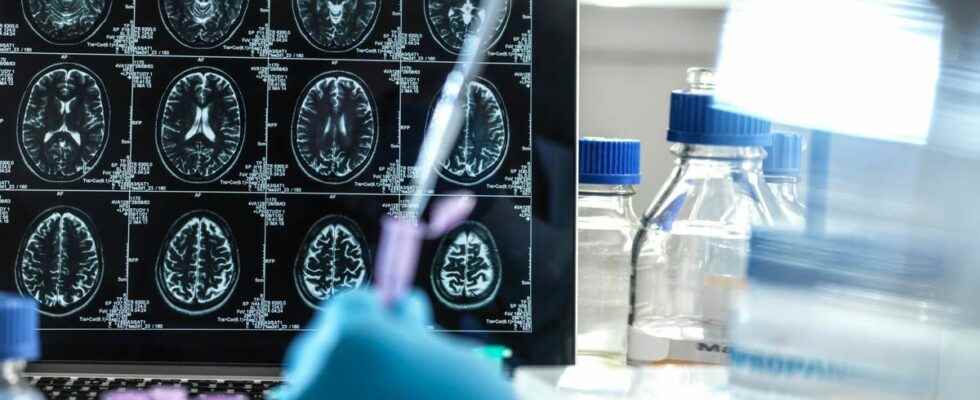Published on
Updated
Reading 3 mins.
A disease affecting more than 55 million people around the world, Alzheimer’s disease currently has no cure. Professor Shai Rahimipour from the Department of Chemistry at Bar-Ilan University now offers a different approach, which seems promising.
Alzheimer’s disease, a progressive and incurable dementia, is a real public health problem. It is estimated that more than 55 million people are affected worldwide in 2020 and estimates expect 78 million in 2030, in less than 7 years.
Alzheimer’s disease: an often late diagnosis
Alzheimer’s disease develops gradually, triggering symptoms that are sometimes not immediately diagnosed as being related to this pathology.
Very often, the diagnosis will be made when the brain cells responsible for memory and cognition are already damaged beyond repair.
A new avenue of treatment
For years, the main line of research for treating Alzheimer’s disease has targeted the deposits of a small protein, beta-amyloid. This protein, which forms oligomers then fibrils and amyloid plaques, seemed to cause brain disorders. This was for a long time the main explanation for Alzheimer’s disease.
Today, the scientific approach has evolved and oligomers are now suspected to be the main culprits of this insidious disease. In any case, this is the track followed by Professor Shai Rahimipour from the chemistry department of Bar-Ilan University and his colleagues from the University of Sherbrooke and the University of Montreal in Canada, in this study.
What are oligomers?
Oligomers are soluble proteins, they represent the free, unfolded form of beta-amyloid peptides in the brain. Oligomers are therefore the intermediate step between amyloid proteins and the formation of fibrils and plaques. Prof. Shai Rahimipour was therefore interested in this specific stage in an attempt to block their progression towards the state of amyloid plaques.
With his colleagues, he has worked on the use of small cyclic peptides that combine diagnostic biomarkers and targeted therapeutic agents, to both identify and treat the first pre-symptomatic signs of Alzheimer’s disease. And thus prevent irreversible damage to brain cells.
Efficacy confirmed in vitro and then in animal models
Shai Rahimipour and his team therefore attempted the experiment in vitro. Result: when the two types of molecules – cyclic peptides and amyloid beta proteins – were placed in a test tube, no oligomer was formed.
The researchers then tested their compound on animal models, C-elegans worms and mice. In these animal tests, the peptides were also shown to be effective in detecting and blocking early oligomers before the onset of disease symptoms. This had the effect of attenuating the behavioral, cognition, memory and learning deficits of the guinea pigs.
“In these animal models, we have indeed stopped the disease in its infancy, even before the oligomers are formed.” says Professor Rahimipour. “A big advantage of our synthetic molecules, unlike natural antibodies, is that they are not immunogenic and they stay in the body much longer, so fewer injections are needed.“he adds.
Drugs that cross the blood-brain barrier
Other recent clinical trials use antibodies to block oligomers. Problem: antibodies are molecules too large to pass the blood-brain barrier and cannot reach the brain, where their effect is expected.
In this study, the researchers demonstrate that their peptide is able to cross this barrier. For this, they used transgenic mice and a radioactive version of the cyclic peptides. Using positron emission tomography (PET), they were able to detect the radioactive molecule within the thalamus. Beta-amyloid oligomers could also be detected in this part of the brain, upstream of the formation of amyloid plaques. These oligomers were also treated with the peptides and the researchers observed their quantity in the brain and the evolution of the memory of the treated mice.
“NOTOur experiments showed no signs of toxicity and unlike antibodies, the molecules cross the blood-brain barrier very well.“says Professor Rahimipour again. The objective of the researchers is now to develop these molecules into an experimental drug.
